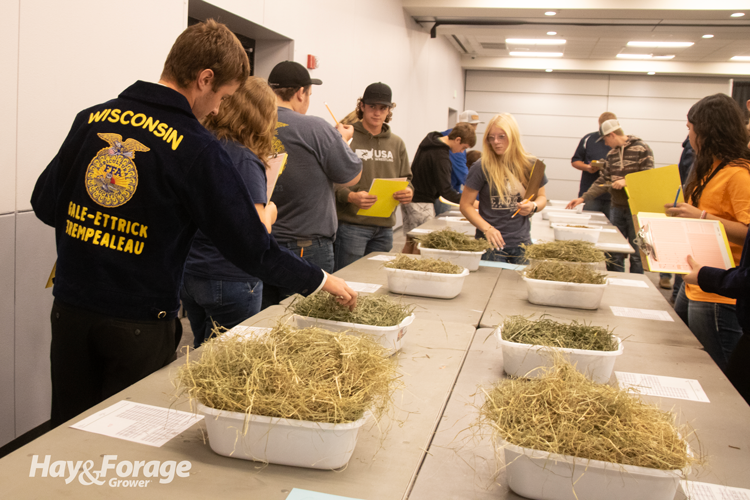
Out of the percentage of our population that pursues higher education, only a small fraction of those students choose to study agriculture. Smaller yet is the number of people interested in crop and soil science who sign up for an agronomy lecture. And not even all of them will take a seed science class, enroll in a plant breeding lab, or participate in seed and crop judging.
Even before the collegiate level, though, some high school FFA chapters have the opportunity to get involved in forage judging, possibly competing at the national scale. At this year’s Central Forage Management Cup at World Dairy Expo in Madison, Wis., I had the chance to speak with FFA members from several states before the contest began. Through a bit of small talk, I gathered a mix of enthusiasm, nerves, confusion, and typical teenage angst, especially from those who had already logged a few early morning hours in a school Suburban to make it to the registration table on time.
For the most part, the students said they had studied the material, practiced with their classmates and advisors, and many of them cited their own farming backgrounds and work experience as sources of confidence in the four-part competition. Those parts included forage crop judging, a production management quiz, a lab practical, and seed and plant identification, which seemed to be the most tedious and painstaking section, if you ask me.
Committing the shape, size, and color of individual forage seed species to memory by examining samples and flipping through flashcards were proven strategies used to cram for that leg of the competition. However, I believe the promise students made to themselves and their teammates to prepare for and participate in seed and plant identification — as well as the rest of the contest — will benefit them for years to come.
For those who go on to grow forage, make hay, graze pastures, and raise livestock of their own, this competition may be their basis of understanding for seeding rate, forage growth curves, pest management, and best harvest practices. Other real-life, hands-on experiences provided through FFA, 4-H, breed associations, and similar youth organizations will also plant seeds of knowledge, decision-making, and problem-solving in the minds of tomorrow’s farmers. And not only do these opportunities expose the next generation to agricultural learning, but they also foster important leadership, public speaking, and interpersonal skills, which are assets for young people entering adulthood from any angle.
You may notice a relatively high amount of seed-related content in the subsequent pages. This includes an update on next year’s forage seed supplies, the National Alfalfa and Forage Alliance’s alfalfa variety ratings, and a feature story about two young women who trade their summer vacations for full-time grass seed harvesting jobs. When you think about it, the other articles about forage characteristics, pasture fertility, and livestock nutrition can all trace their origins back to seeds, too, just like the students at the Central Forage Management Cup will be able to refer back to the life lessons that were instilled in them by getting involved at an early age.
As today’s farmers, you can credit your perennial hayfields, mixed-species pastures, corn silage acres, and annual forage stands to the germination and emergence of tiny seeds. You can also consider the choices made, risks taken, and even mistakes endured early in your careers as the seeds that have grown into the business that you operate today. Even though planting seasons come and go, crop rotations continue on, and seeds never really stop being sown.
So, whether you have just established a late-summer seeding of alfalfa, want to fill in sparse pasture by frost-seeding clovers later this winter, will select improved grasses to plant next spring, or are a forage seed breeder, grower, or marketing specialist, you have skin in the forage seed game. More importantly, you understand that seeds are just a metaphor for humble beginnings, which is how most production systems, forage research, and farmer stories get their start.
The way you sow and steward seeds creates ripple effects on your farm and in your life. Just like a forage stand’s full potential can only be realized with careful planting and seedling management, so, too, will minding the little things ensure that your bigger picture is rewarding and resilient.
This article appeared in the November 2025 issue of Hay & Forage Grower on page 4.
Not a subscriber? Click to get the print magazine.
